#BEIJING
Explore tagged Tumblr posts
Text
April 20, Beijing, China, National Museum of China/中国国家博物馆 (Part 1 - Dehua white porcelain exhibition/德化白瓷展):
Aaand finally, the National Museum of China/中国国家博物馆! I was lucky enough to see the famed Dehua white porcelain exhibition/德化白瓷展 here. Some of you may recognize some of these pieces already, since pictures and shorts of them have been circulating online way before I went on this trip, but there are many many other pieces too. The pieces I post here are only a small portion of the entire exhibition, so if you ever get a chance to see the exhibition elsewhere in person, don't hesitate. This stuff is amazing.
First up is one of the two that has been gaining popularity online, the piece named 神话 or "Legend".

The first time I saw a porcelain piece like this, I thought that the clothing part was made with paper? But no, the light fabric of the clothing, the hair, it's all porcelain. Keep in mind when looking through these pictures: every part of every piece is porcelain.
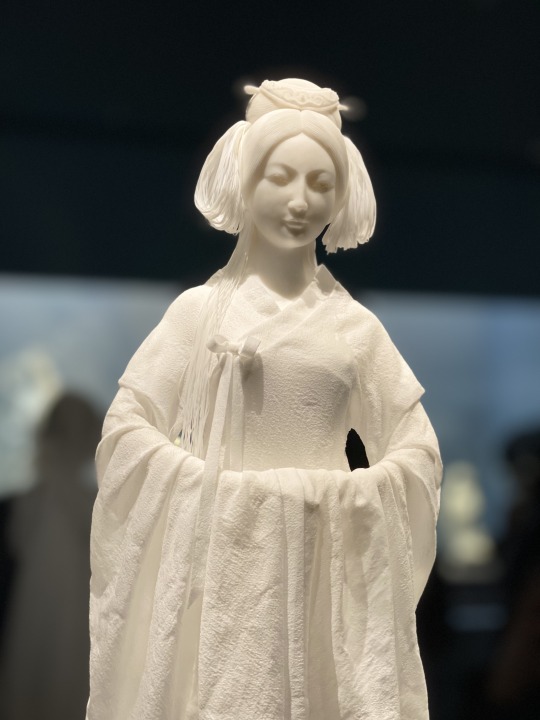
This piece is the other one that was becoming popular, the piece named simply 纸, or "Paper". If you don't look up close and see the glossy surface, you can't tell it's actually porcelain. I cannot for the life of me imagine the kind of magic that was used to turn clay into this
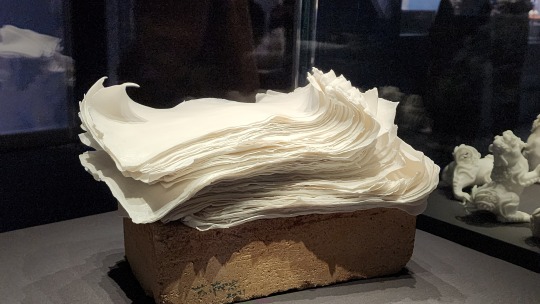
Anyway, this is a good point to introduce Dehua porcelain a little bit. Dehua porcelain is a regional specialty of Dehua/德化, which is located in Fujian province, and is known for its expressiveness and white color. For this reason it's also known in the West as "Blanc de Chine" (French: "white of China"), and this should be the reason why this exhibition is named 中国白, which basically means the same thing. The history of Dehua porcelain goes back to Song dynasty (960 - 1279), and it is still being produced today. Many of the pieces I'm posting here are modern pieces.

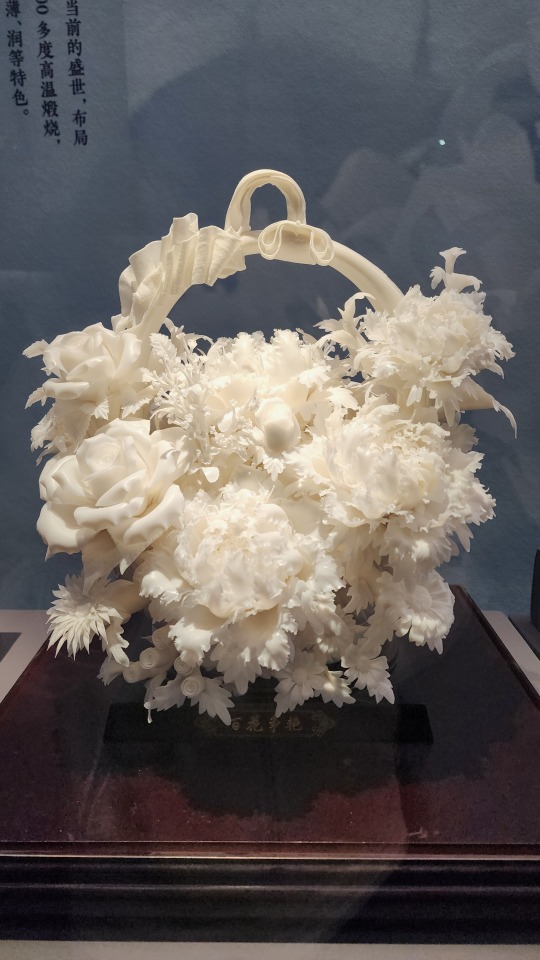
But Dehua white porcelain can be colored too (I imagine the color must be painted on later, because the white comes from the clay itself), and when it is colored, it looks like it came right out of a painting

This piece is especially amazing to me. Look at the texture, look at those details. Zoom in and you will find that there are actually a bunch of porcelain ants on this porcelain tree stump. Porcelain ants. I never expected to use porcelain as an adjective when describing ants. Wtf. It's like a manifestation of a scene from an older animated movie.
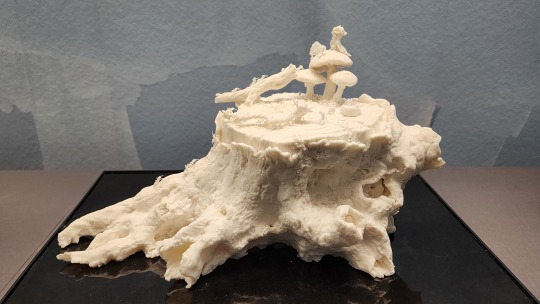
Peanuts are called 花生 in Chinese, which literally means "flower grow", and because it also has a long shelf life, it symbolizes longevity and a happy marriage. Also a fun fact: because Watson of Sherlock Holmes is usually phoenetically translated as 华生 (huá shēng) in Chinese and sounds similar to 花生 (huā shēng), you will find that many in the Chinese SH fandom refers to Watson as "peanut".

This piece is titled 春色满园, or "garden filled with spring scenery". This is also a common 4-character word used to describe gardens in spring. I'm guessing the figure depicted here is one of the flower gods. It is one of my personal favorites because of its superb depiction of movement, it's as if the flower god will really fly away on clouds at any moment
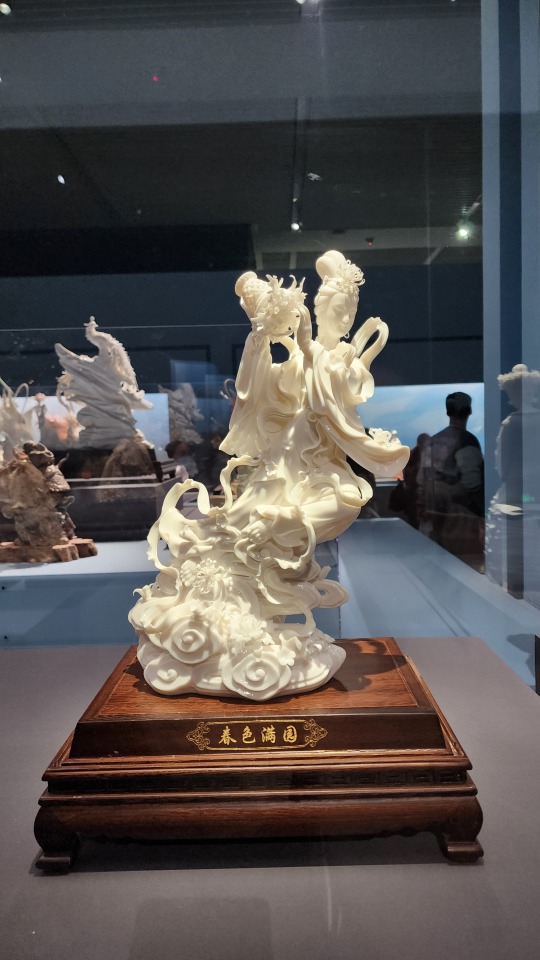
More depictions of traditional Chinese deities, specifically Chang'e/嫦娥, the moon goddess. That moon rabbit is too cute.


Depictions of what I'm assuming is the Four Heavenly Kings/四大天王, based on the items they are holding. The Four Heavenly Kings are Buddhist deities.

Look at her clothing! That porcelain is so thin it's almost see-through! Also is it depicting Li Qingzhao/李清照, the famous female poet from Song dynasty? She does have a famous ci poem that's about paddling a boat in a lake full of lotuses while drunk

The piece titled 锦绣前程, or "future as vibrant and prosperous as silk brocade". This is also a common 4-character word used in well wishing. The figure in this piece is holding a xiuqiu/绣球, a ball made of silk, which was usually seen as a token of love


Somewhat more modern-themed pieces:
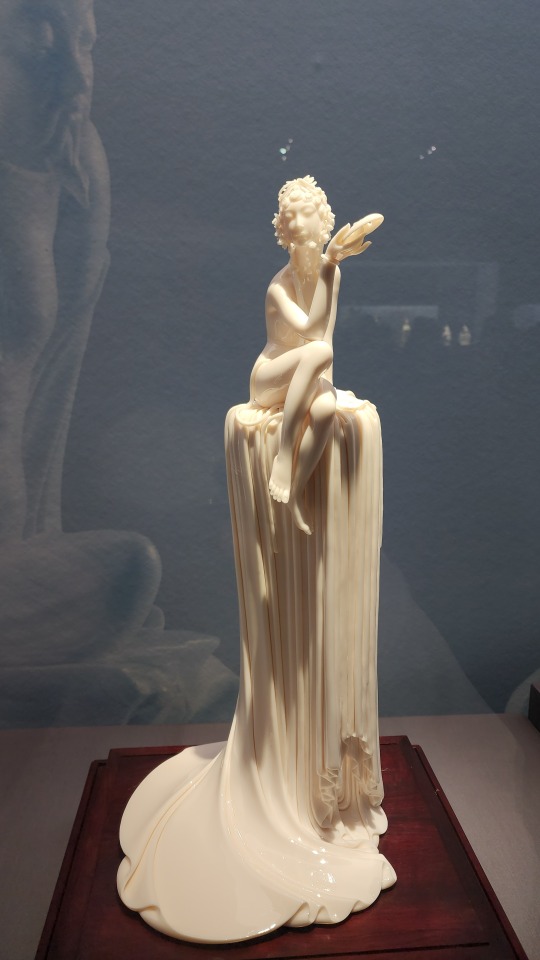

Among the hundreds of amazing pieces, this one caught my attention for its unique texture. When everyone else was trying to turn the clay into these thin sheets representing fabric or paper or flower petals, this artist took the noodle approach. Not many visitors seemed to like it, but I think it's pretty cool

Piece titled 运势如虹, or "fortune like the rainbow", also a 4-character word used in well wishing. Traditionally horses symbolize vitality and success, hence why many people use the words 马到成功 ("horse's arrival brings success") and 龙马精神 ("vitality of dragons and horses") in well wishes during Year of the Horse
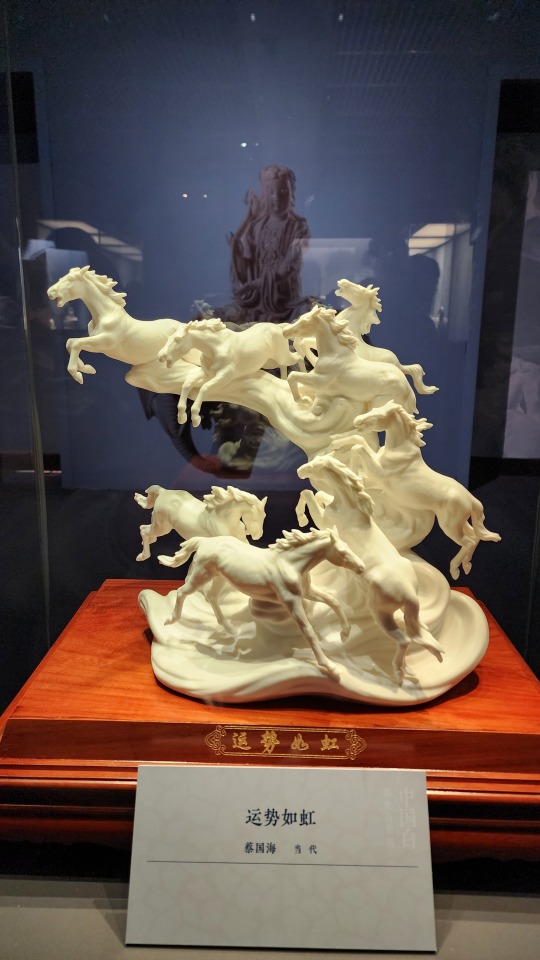
Stay tuned for Part 2 of the Dehua white porcelain exhibition!
#2024 china#beijing#china#national museum of china#dehua porcelain#blanc de chine#porcelain#chinese art#chinese culture#art#culture
4K notes
·
View notes
Text
The Beijing court supported Ms. Gao on two counts and ruled that Dangdang should continue to honour her original contract of employment. In addition, the court said Dangdang should pay her salary from the date she applied for sick leave to the date of arbitration
The Beijing No 2 Intermediate People’s Court went on to state that “social tolerance is a blessing of the rule of law” and highlighted the need to “respect diverse ways of living and protect the dignity of transgender people.”
#China#trans liberation#workers#equality#solidarity#socialism#TransRightsAreHumanRights#Beijing#Dangdang
8K notes
·
View notes
Text




Anzas Studio by Yoshimasa Tsutsumi (2011) Location: Beijing, China
#anzas#dance studio#interior design#interiors#architecture#Yoshimasa Tsutsumi#fog#grey#beijing#china#2011
4K notes
·
View notes
Text
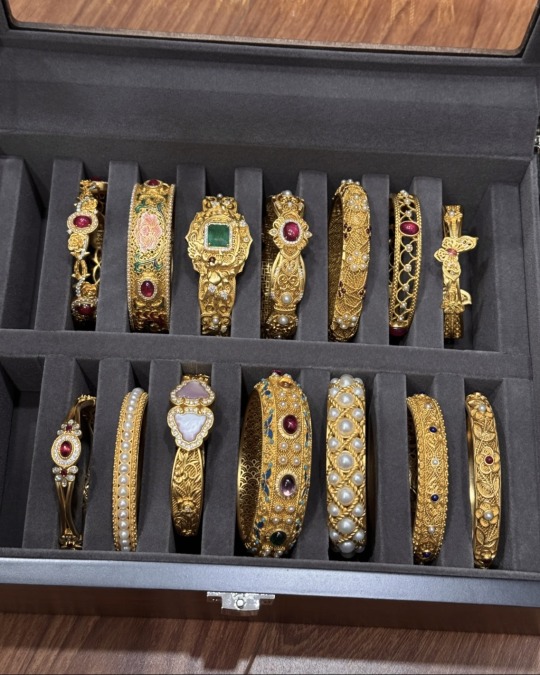




Traditional Chinese gold bracelets. Made using an ancient craftsmanship “filigree inlay” 花丝手镯
Beijing and Hebei filigree inlay techniques were historically the most famous and renowned in the industry.
Examples of Chinese bracelets from the Ming and Qing dynasties (1368-1644 and 1644-1912 respectively).

#china#chinese heritage#chinese culture#chinese#people’s republic of china#Jewelry#chinese architecture#Beijing#chinese history#Chinese jewelry#chinese gold#gold#bracelets#Ming dynasty#Chinese crafts#qing Dynasty#history#artifacts#Chinese artifacts#Hebei#Chinese craftsmanship#Chinese bracelets#chinese fashion#chinese art#🇨🇳#filigree inlay#golden bracelets#gold bracelets#gold jewelry#craftmanship
565 notes
·
View notes
Text



Beijing through the eyes of Bruno Barbey. 1970-80s.
545 notes
·
View notes
Text




Anzas Studio by Yoshimasa Tsutsumi (2011) Location: Beijing, China
#architecture#yoshimasa tsutsumi#2011#interiors#interior#art#aesthetic#aes#beijing#china#places#locations#dreamcore#soft#softcore#anzas studio#studio#studios
752 notes
·
View notes
Text


北京,北海「小西天」萬佛樓極樂世界殿 (?)
1920s(?)
208 notes
·
View notes
Text

Spring Sunset, Beijing -- April 20th, 2024
Etsy
#beijing#peking#china#zhongguo#china photos#china photography#original photography#street photos#street photography#photographers on tumblr#artists on tumblr
398 notes
·
View notes
Text
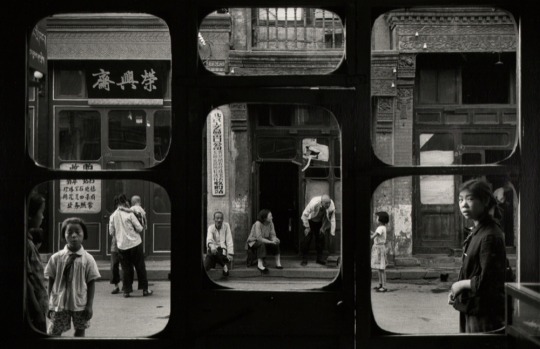
Marc Riboud | The Antique Dealer's Window. Beijing, 1965.
1K notes
·
View notes
Text













House of Bluff, Mentougou, Beijing, China,
Chaoffice Architects
#art#design#architecture#minimal#nature#interior design#interiors#bluff#china#beijing#chaoffice#mentougou#renovation#restauration
191 notes
·
View notes
Text
April 20, Beijing, China, National Museum of China/中国国家博物馆 (Part 2 - Dehua white porcelain exhibition/德化白瓷展 continued):
This was actually the very first piece I encountered at the entrance to the exhibition, a gigantic basket of flowers (probably over 1 meter tall and over 1 meter wide?), the entire thing made of porcelain.
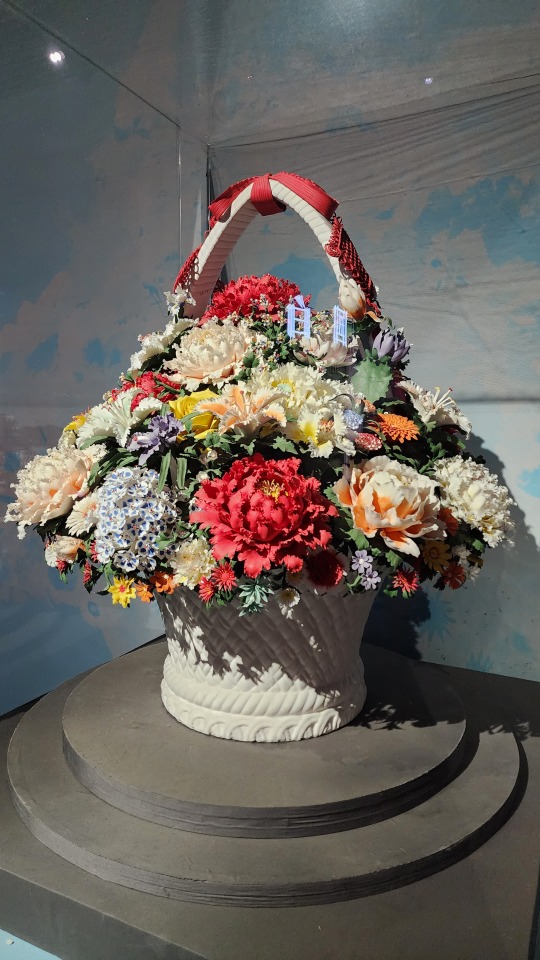
And to reiterate, every part of every piece is porcelain. Though I will say that despite the ultra-realistic shape of the flower petals and leaves, the only detail that hinted at these flowers being made out of porcelain was that the painted colors weren't as vibrant as real flowers. That's it. If you don't examine it up close you really can't tell that it's all porcelain.
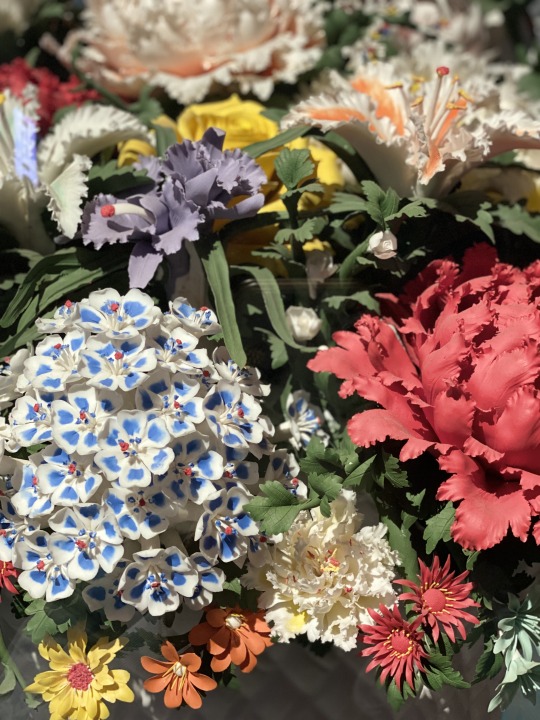
This is a good place to roughly introduce the technical side of Dehua white porcelain. The color of Dehua white porcelain mainly comes from the clay it uses, which is a special kaolin clay (gaolingtu/高岭土 in Chinese) found in Dehua. The clay mineral used naturally contains sericite and quartz, both of which are silica minerals and may have contibuted to the almost translucent look of the finished pieces; it also contains comparatively high amounts of potassium oxides, while the amount of iron oxides present is low. Due to the intricate designs of the pieces, the firing success rate may be very low. All those pieces involving super thin parts representing fabric or paper or flower petals? They may bring the success rate down to about 5%. Which means many of these pieces may be the 15th-20th try that finally survived firing. For people who are more interested in the chemistry of Dehua white porcelain, this paper goes into depth about it. There's also a great book in Chinese that goes into depth all about Dehua porcelain. (link goes to the first chapter only)
Continuing on, this is one of many Guanyin/观音 (Avalokiteśvara) statues at the exhibition, again with light clothing made out of porcelain:
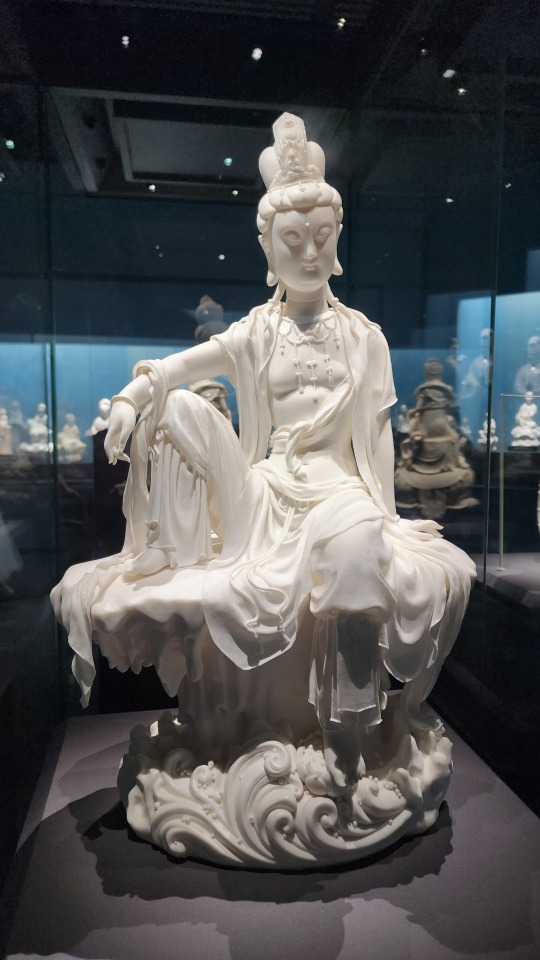
More Guanyin statues in various classic depictions/forms, of which there are 33 total. This particular form is called Yulan Guanyin/鱼篮观音 (鱼篮 means fish basket), and comes from a legend where Guanyin transformed into a beautiful female fish vendor in order to guide mortals.
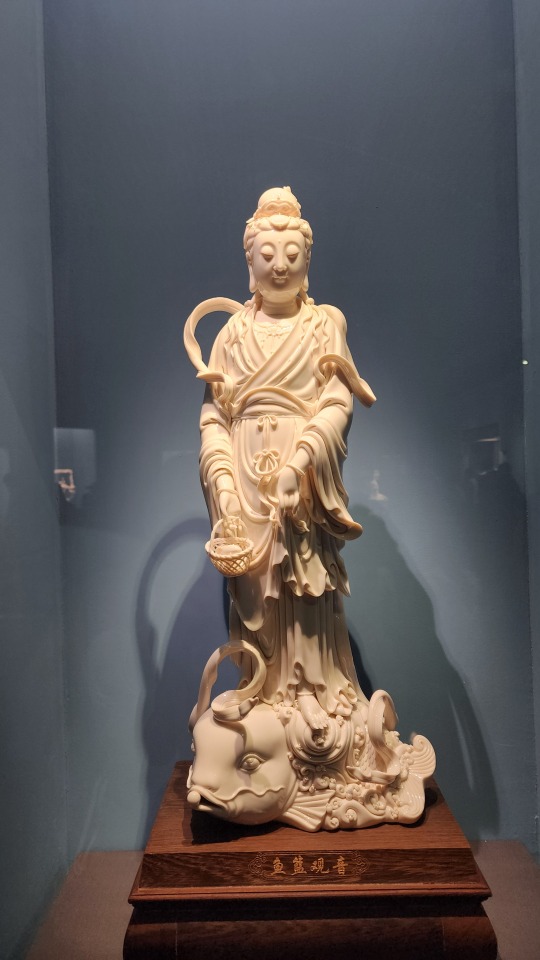
I believe the text here reads 持经观音 (Guanyin holding scripture)? The Guanyin here is holding a vase instead of a scroll though.
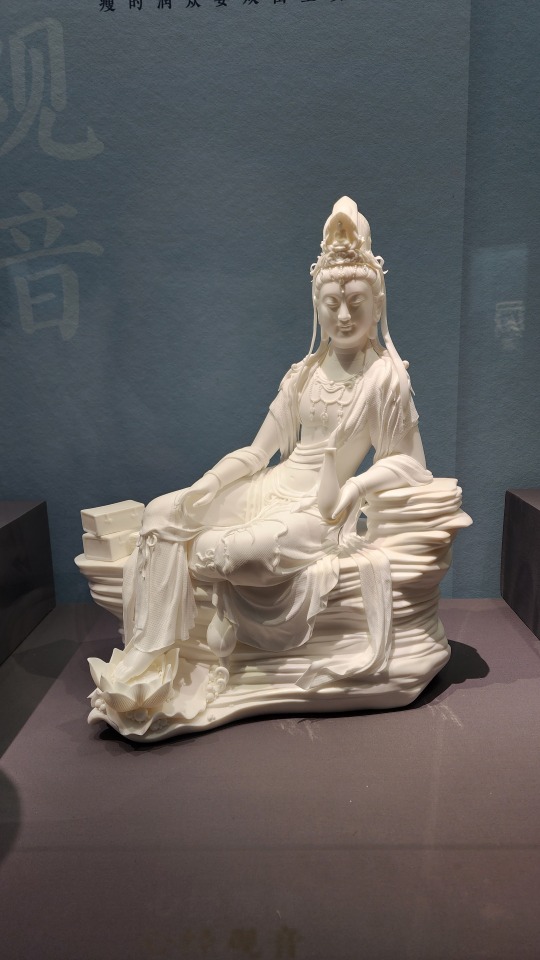
This is a classic depiction of Guanyin with a little bit of a modern-ish twist? Guanyin is often depicted with a vase of divine water, but here it forms a circle.

Despite some of the Guanyin statues having the amazing ceramic "clothing", this one remains my favorite, just because of the sense of space and serenity that this simple "frame" design creates:
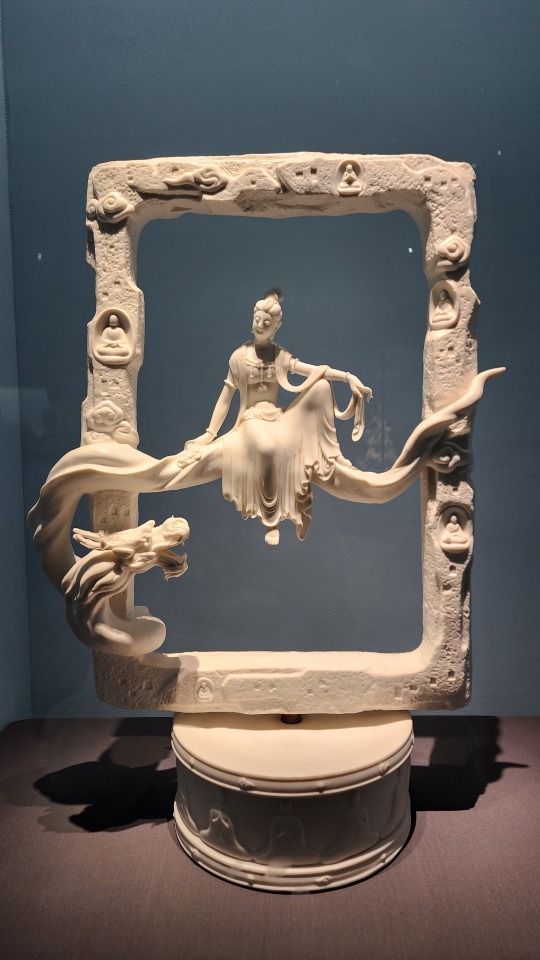
And this very literal take on "thousand arm Guanyin" (千手观音). It's giving me that "biblically accurate angels" vibe:
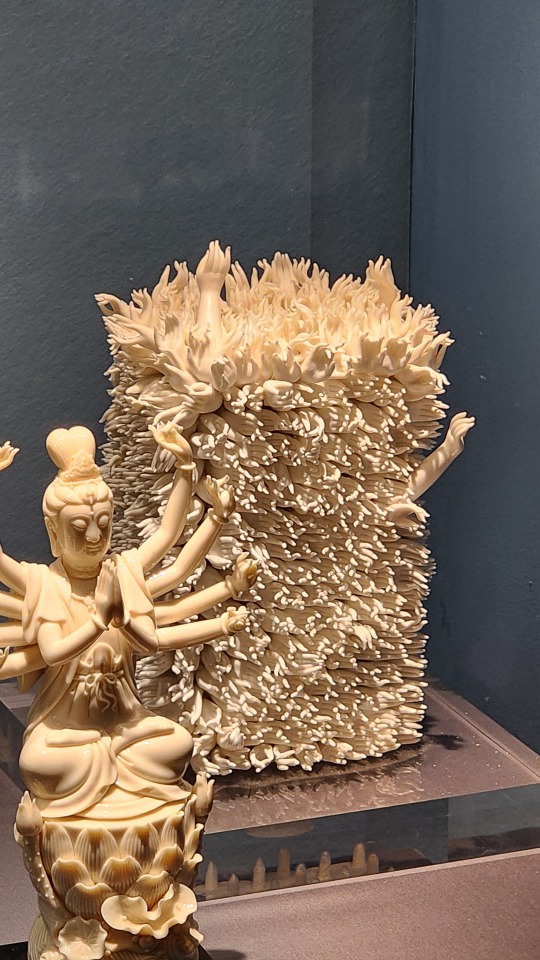
Buddha floating atop.......idk what that is but the texture is amazing:
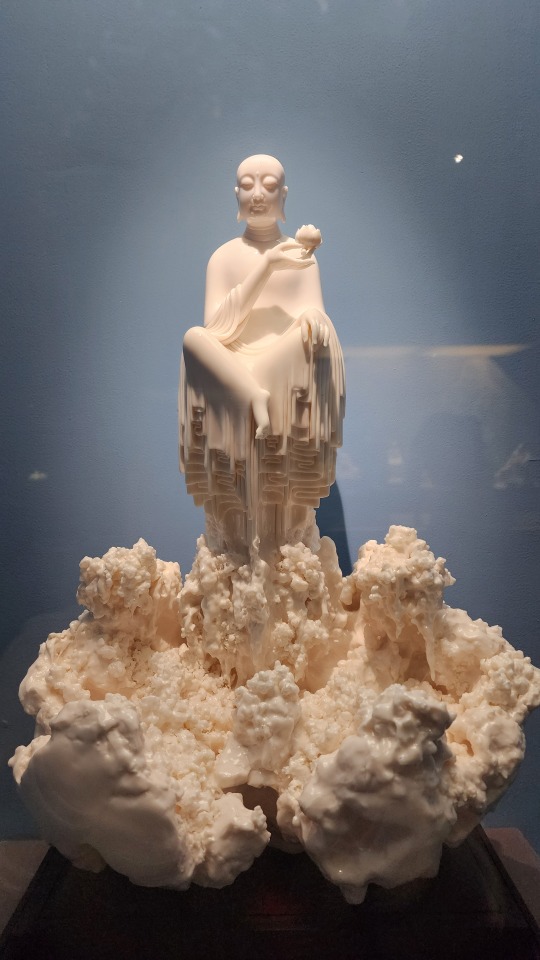
A fully painted statue of Guanyu/关羽. The gradient and detailed patterns on his robes is amazing:
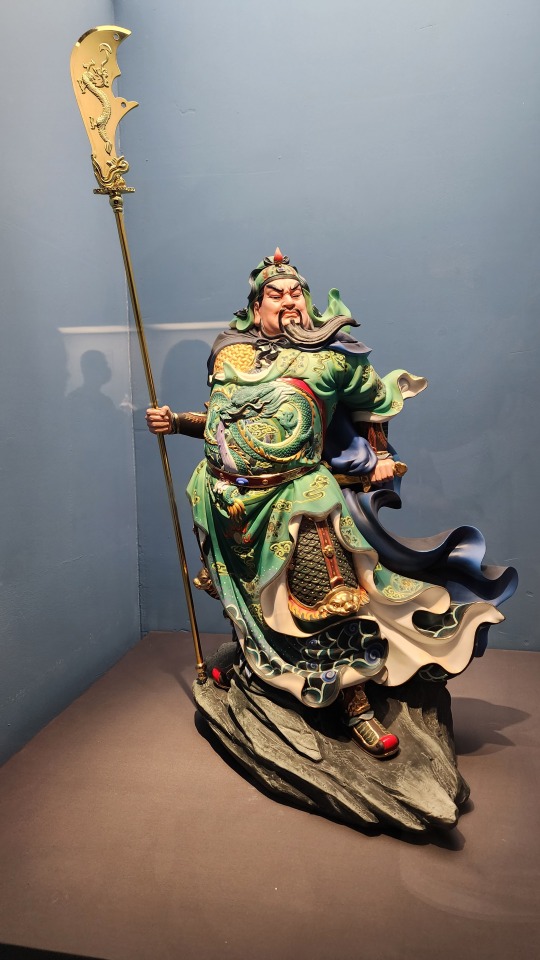
Two identical (I think?) statues of the daomadan/刀马旦 (female commander archetype) character Mu Guiying/穆桂英 as she would appear in Chinese traditional opera, one painted and one unpainted. The word 巾帼英雄 in the title means "hero in women's headscarf", which is a term used exclusively in reference to female heroes. There's also the phrase "巾帼不让须眉", which roughly means "those in women's headscarves aren't inferior to those with beards and thick brows"
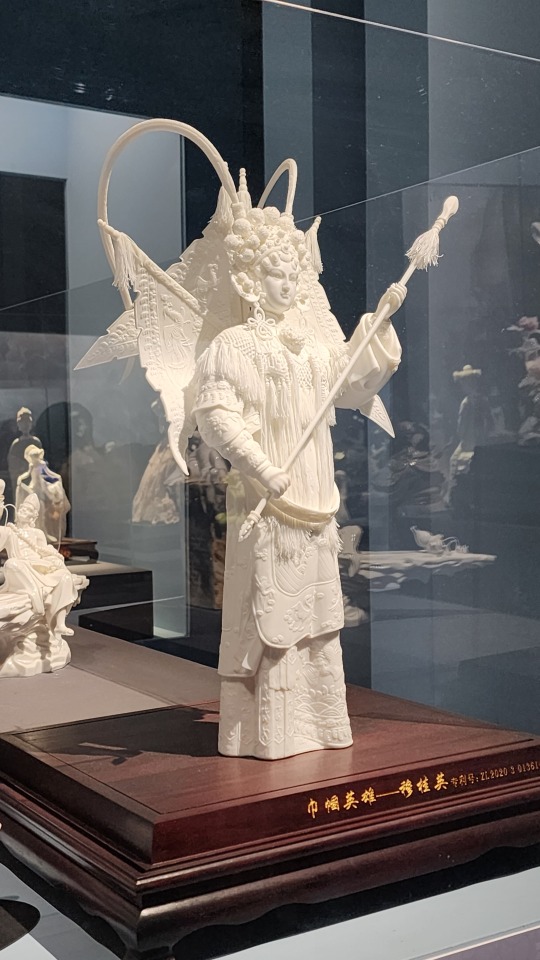
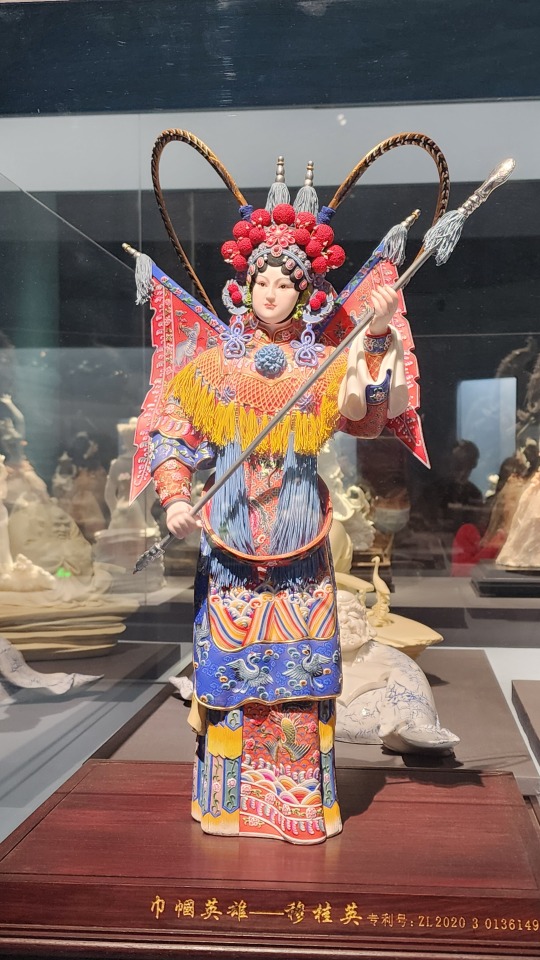
Porcelain depiction of Dunhuang's famous feitian/飞天 figures, in the classic pose of playing pipa in reverse (called 反弹琵琶). The clothing on this figure is made of porcelain, but this time also painted:
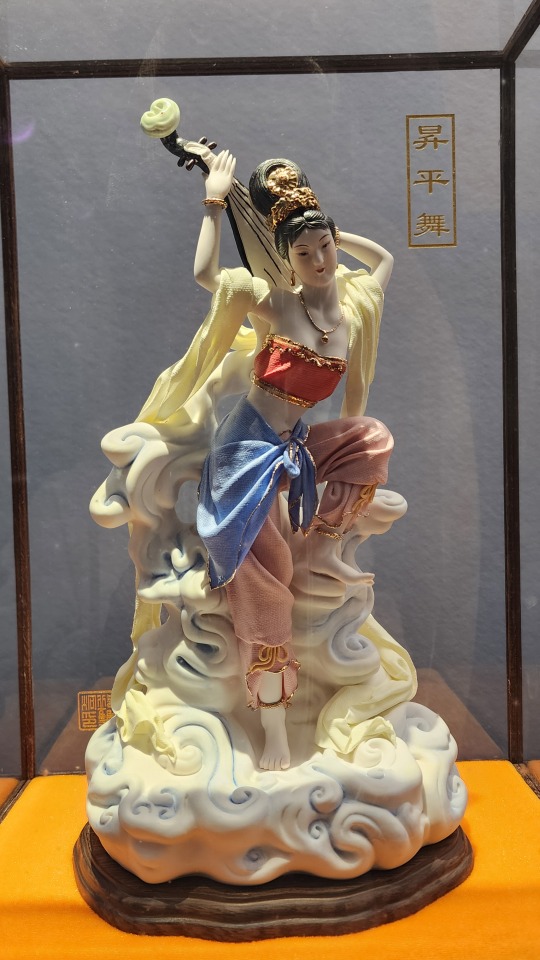
A porcelain statue of a couple in traditional Lhoba/Luoba/珞巴 clothing. The Lhoba/Luoba people are one of China's 55 少数民族 who mainly live in the south-eastern region of Tibet Autonomous Region, and as of 2019, it is the 少数民族 with the smallest population
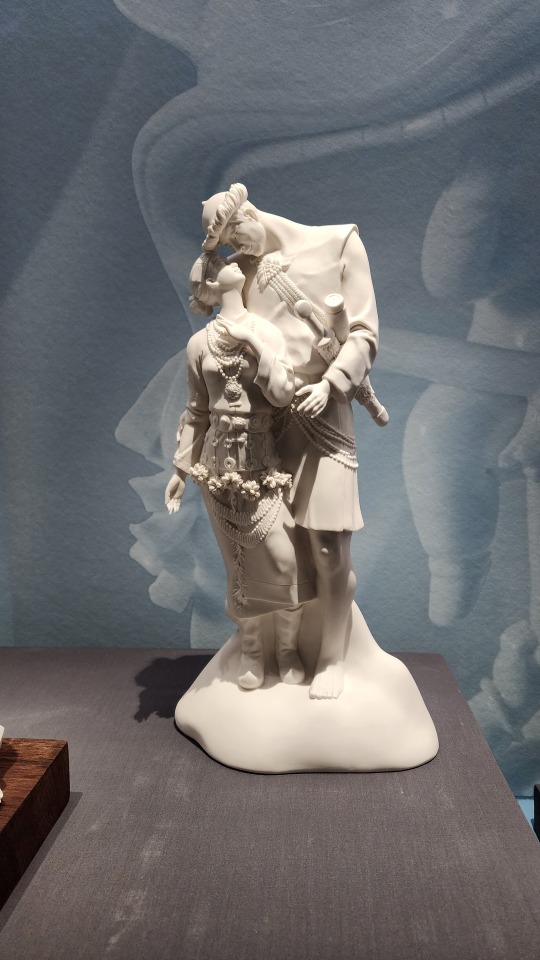
A porcelain statue of a woman in traditional Miao/苗 clothing. I love how the artist recreated the traditional Miao silver crown in porcelain.
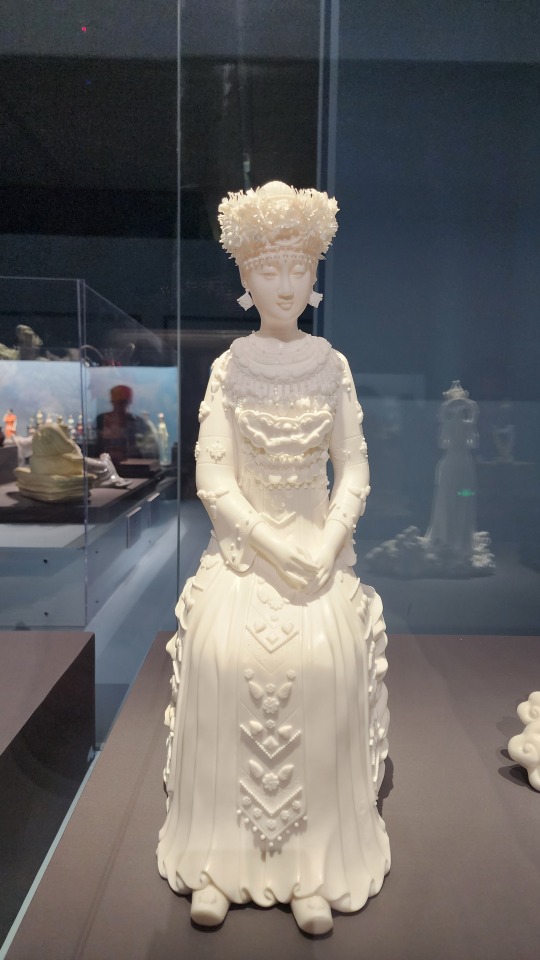
Painted porcelain bust of a woman wearing the Xunbu/蟳埔 "flower crown", named a zanhuawei/簪花围. The town of Xunbu in Fujian province is known for its tradition of zanhua/簪花, or wearing flowers in one’s hair.
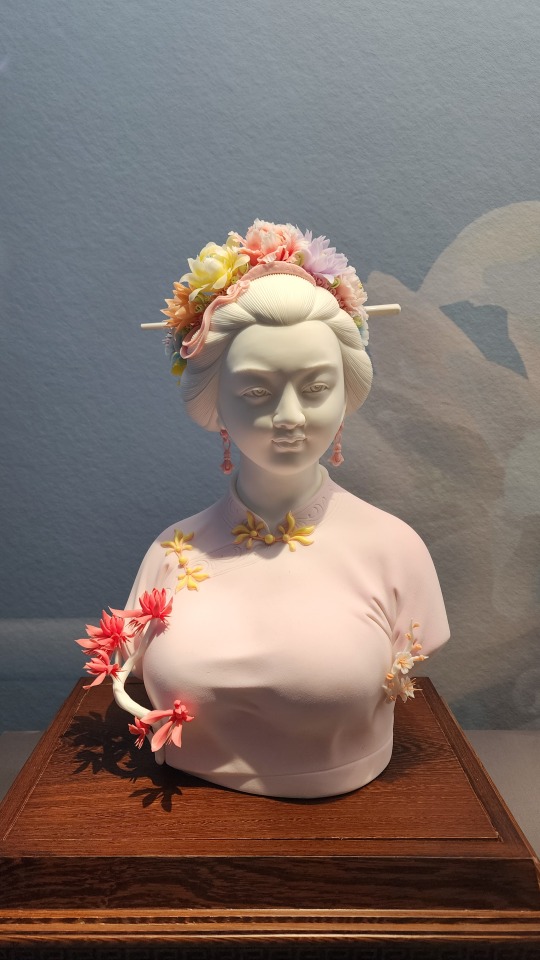
Porcelain statue of a Buddhist monk wearing a zhiduo/直裰 (the robes on the inside) and a jiasha/袈裟 (काषाय/kasaya; the garment on the outside that drapes over the left shoulder). From its looks, one can tell that zhiduo originated from hanfu, but with some minor changes (sidenote, this is not the same as the zhiduo of Ming-era hanfu). Jiasha evolved from the clothing of Indian Buddhist monks, but there appears to be a lot of influence from Central Asia and ancient Greece as well (link goes to pdf; this article is in Chinese).
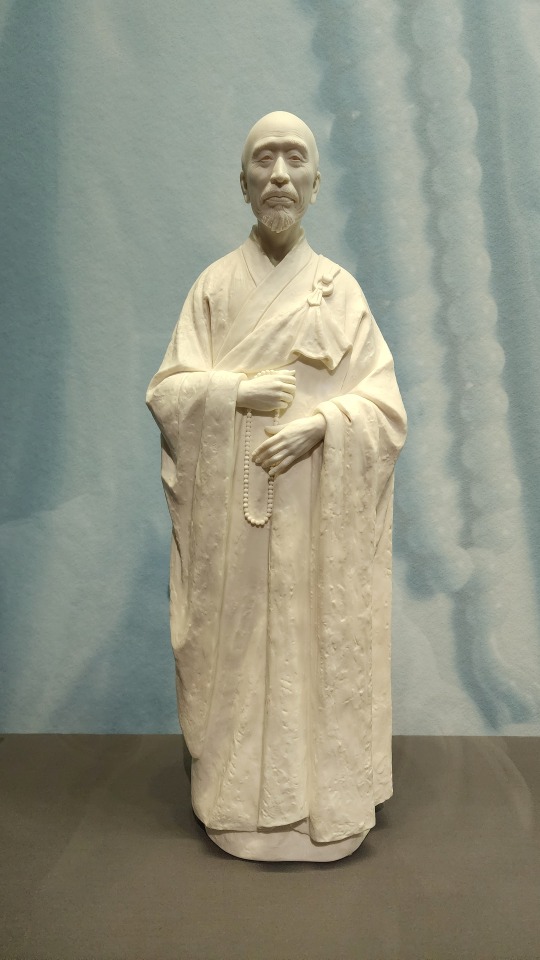
Some modern-themed pieces. Look at those dresses omg
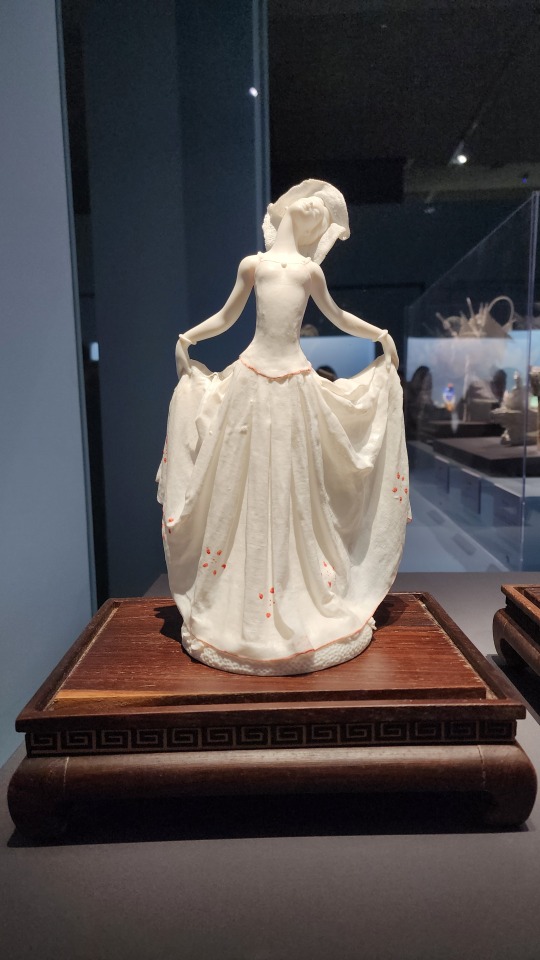
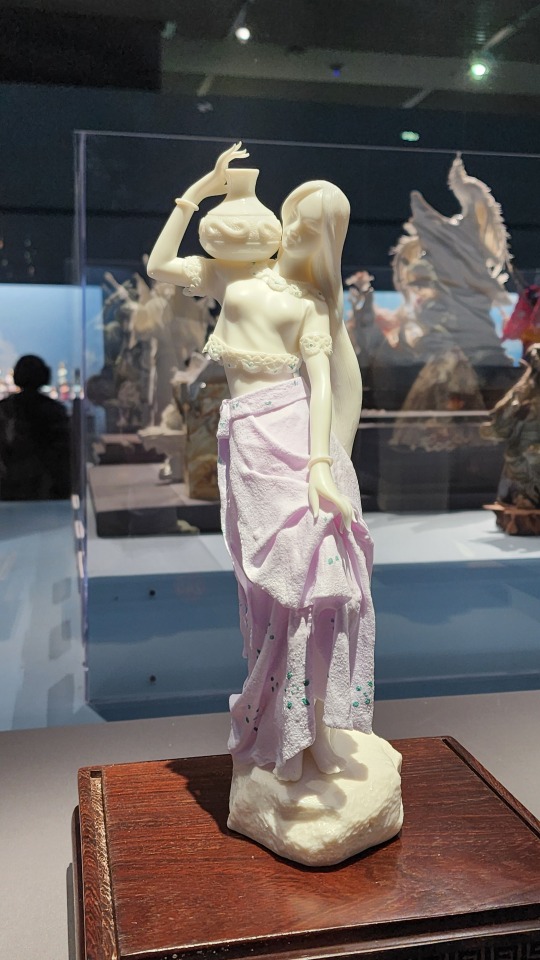
A porcelain statue of Hua Mulan/花��兰, the character from traditional Chinese literature and opera that inspired the Disney character. I will say though this pose reminds me of someone else.......
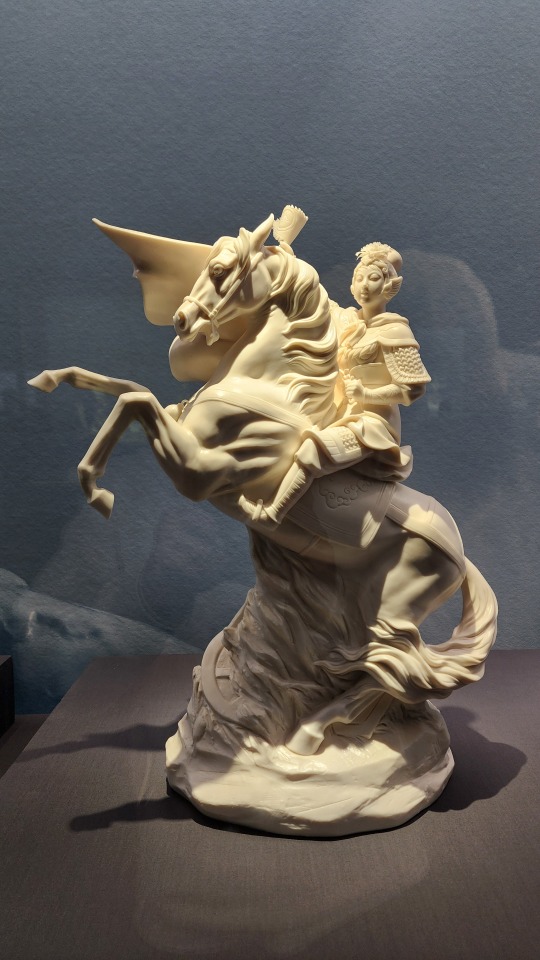
#2024 china#beijing#china#national museum of china#dehua porcelain#blanc de chine#porcelain#chinese art#chinese culture#art#culture#buddhism#guanyin
699 notes
·
View notes
Text

Today's been good
113 notes
·
View notes
Text

Wang Wei: Yin Hang, Beijing (2020)
7K notes
·
View notes
Text






Traditional Zaojing 藻井 ceilings in Chinese palaces and temples, Beijing. 🐉
#China#🇨🇳#Beijing#Peking#chinese architecture#temples#ceilings#palaces#caisson ceilings#chinese temples#Chinese palaces#Chinese#Han Chinese#Chinese culture#Chinese heritage#East Asia#history#🐉#dragons#prc#people’s republic of china
432 notes
·
View notes
Text

Food stall in Beijing, 2014, shot with canon
#photography#canon#original photographers#photographers on tumblr#street photography#china#beijing#food photography#vintage
85 notes
·
View notes
